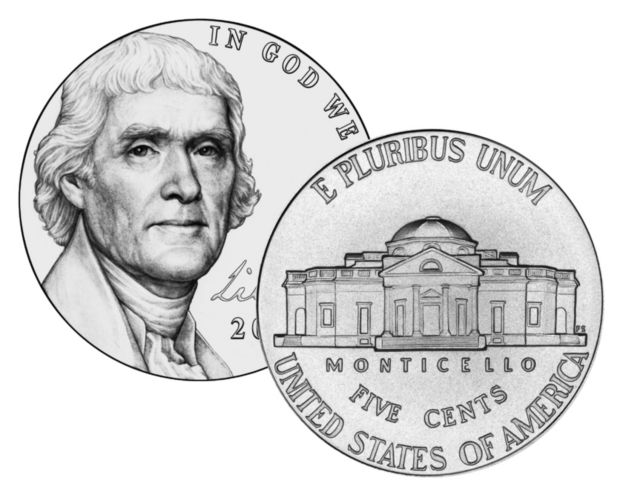Jefferson and American Money
Reading Level: Elementary School
Look at a nickel. Who—and what—do you see? On one side is Thomas Jefferson. On the other side is Monticello, his home. One reason Jefferson is on the nickel is because he was our third president. Another reason is because he helped create the money system for the United States.
After the American Revolution, each colony had its own money system. Coins were used from Portugal, Spain, and England. Each colony decided what the coins were worth. These amounts were different from colony to colony. Some colonies even minted (made) their own coins.
The different money systems confused buyers and sellers. The new government of the United States knew it needed one system. One system would make trade easier. But what money system would be used?
Thomas Jefferson answered this question. Jefferson felt that a decimal system should be used. A decimal system is based on the number ten. A dollar was already used in the colonies. Jefferson felt that the dollar could be worth ten dimes. This came from the Latin word for “one tenth.” The dollar could also be worth one hundred cents. This came from the Latin word for “one hundred.”
In April 1784, Jefferson presented his ideas to the government. Jefferson’s decimal system made sense. The government passed a law to accept the system. It is still used today.



